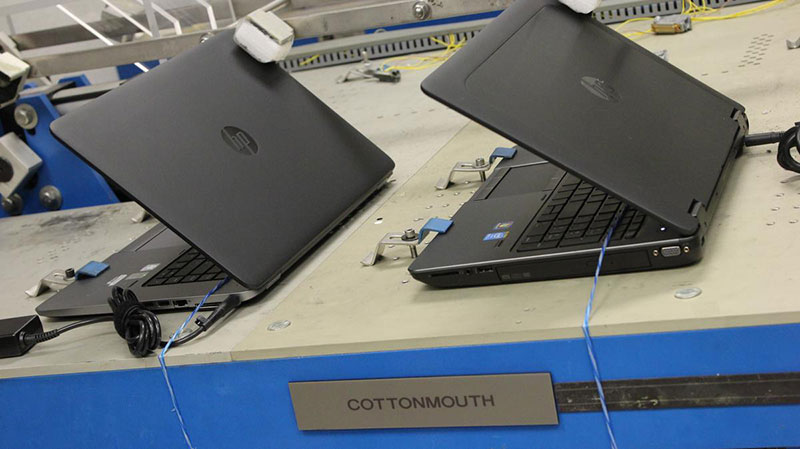In the ever changing world of technology it is imperative that computer companies stay ahead of the competition, which includes thinking of every possible way to break a laptop before it reaches the consumers hands. Laptops are computers on the go, which means they are exposed to infinitely more hazards throughout their lifespan. To stand up against these ever changing conditions, laptops are subject to thousands of hours of testing before they hit the shelves. Companies test buttons, hinges, drop and shock resistance, shipping damages, environment, and excessive battery heat. If you are interested in learning more about the products that test equipment click this link.
The first stage of testing is making sure the product will work as designed over several thousand uses. Companies program machines to repeatedly press buttons on the laptop and open and then close the CD-ROM like a hyperactive two year old. Hewlett Packard uses a robotic arm that will constantly open, then close the laptop to test the durability of the hinges approximately 27,000 times. These tests may sound entertaining, but they serve an incredibly important role in ensuring the customer’s overall satisfaction with the longevity of the product.

One test that all companies use is the drop test. This can look many different ways, but one common form is a platform that can be raised off the ground to various heights. After the platform is raised to a specific height, it drops the laptop with the press of a button. This tests the shock resistance when it hits the ground and then workers will check all of the internal components of the computer. Some companies even test damages that packages can endure during the shipping process. This looks like a hydraulic press crushing a package and then employees investigating the damages to ensure the packaging protected the laptop.
The best part of having a laptop is the portability. Some laptops are capable of going on expeditions in the most extreme climates this world has to offer. Dell uses an atmospheric test chamber to simulate conditions for these expedition ready computers. The chamber can be set to below freezing temperatures and can reach upwards of 100 degrees Celsius to simulate whatever climate the consumer may encounter. Dell also has special rooms where they pump in dust to try and clog vents on the laptop making them overheat and malfunction. These added levels of testing ensure that a customer can safely use the computer no matter where they go.
The most dangerous malfunctions in a laptop are failures that create excess heat that could result in an exploding battery. HP has performed hundreds of torture tests in their labs and have found the major causes for battery malfunctions. HP has a hooded chamber in which they cause many explosions caused by extreme temperatures and low voltage scenarios. The company has done such extensive testing that a consumer would have to purposely cause a malfunction to cause a fire or make the battery explode.
Written by: Quintin Bentley Crevling

